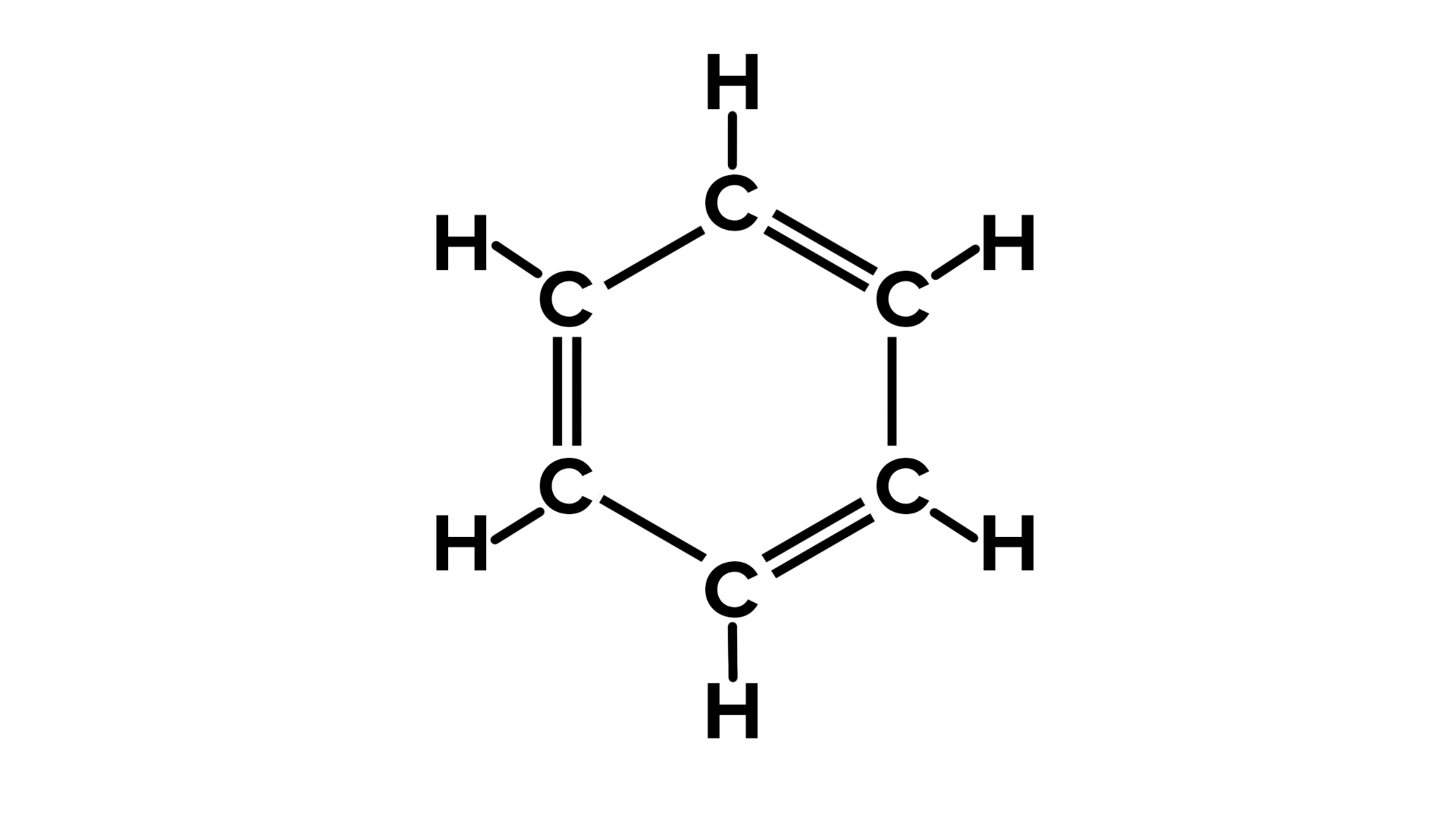Benzene (C6H6)

Benzene:
|
Other Names |
|
|
Chemical Formula |
C6H6 |
|
CAS Number |
71 - 43 - 2 |
|
Industry Uses |
Rubbers, Lubricants, Dyes, Detergents, Drugs, Explosives, and Pesticides |
|
Health Risks |
Cancer |
|
Vapor Pressure |
12.7 kPa (25 °C) |
|
Water Solubility |
Reacts with Water |
|
Flammability |
Non-Flammable |
|
Odor |
Sweet Aromatic |
What is Benzene:
Benzene is an organic chemical compound with the molecular formula C6H6. The benzene molecule is composed of six carbon atoms joined in a planar ring with one hydrogen atom attached to each. Because it contains only carbon and hydrogen atoms, benzene is classed as a hydrocarbon. Benzene is a natural constituent of petroleum and is one of the elementary petrochemicals. Due to the cyclic continuous pi bonds between the carbon atoms, benzene is classed as an aromatic hydrocarbon. Benzene is a colorless and highly flammable liquid with a sweet smell, and is partially responsible for the aroma of gasoline. It is used primarily as a precursor to the manufacture of chemicals with more complex structure, such as ethylbenzene and cumene, of which billions of kilograms are produced annually. Although benzene is a major industrial chemical, it finds limited use in consumer items because of its toxicity. Benzene is a volatile organic compound.
Benzene Exposure and Health Risks:
Benzene is classified as a carcinogen, which increases the risk of cancer and other illnesses, and is also a notorious cause of bone marrow failure. Substantial quantities of epidemiologic, clinical, and laboratory data link benzene to aplastic anemia, acute leukemia, bone marrow abnormalities and cardiovascular disease. The specific hematologic malignancies that benzene is associated with include: acute myeloid leukemia (AML), aplastic anemia, myelodysplastic syndrome (MDS), acute lymphoblastic leukemia (ALL), and chronic myeloid leukemia (CML).
Regulations:
The table below summarizes the most-recent exposure limits.
|
Limit/Level |
Type |
Organization |
|
0.50 ppm |
AEGL-1 (8 hrs) |
EPA |
|
6.7 ppm |
AEGL-2 (8 hrs) |
EPA |
|
11 ppm |
AEGL-3 (8 hrs) |
EPA |
|
5 ppm |
C |
OSHA |
|
1 ppm |
Short Term |
NIOSH |
Measuring Benzene:
Benzene concentration in the air can be measured in units of parts per million (ppm). Many of our products have digital communication capabilities for easy monitoring and control. Benzene monitoring is important in understanding environmental assessments, planning transportation, and making decisions regarding air pollution management. We carry portable and fixed Benzene monitors and kits. All of our Benzene products can be viewed HERE.
What type of component are you looking for?
| Handheld |
 |
All sensors require a yearly calibration to ensure your gas measurements are accurate and performing within manufacturer standards. This page is desiccated to the individual manufacturers we represent and their specific calibration procedures.
**Calibration Service Request Form **
|
Calibration costs do vary, see below to get an estimate: Calibration Fee: $150 Analyzer Calibration Fee: $300 PM Calibration Sensor Fee: $330 Genie Calibration Fee: $265 ATI Calibration Fee: $205 ** note that prices are subject to change per labor and parts required. |
Contact us for help choosing the right monitor for your application






